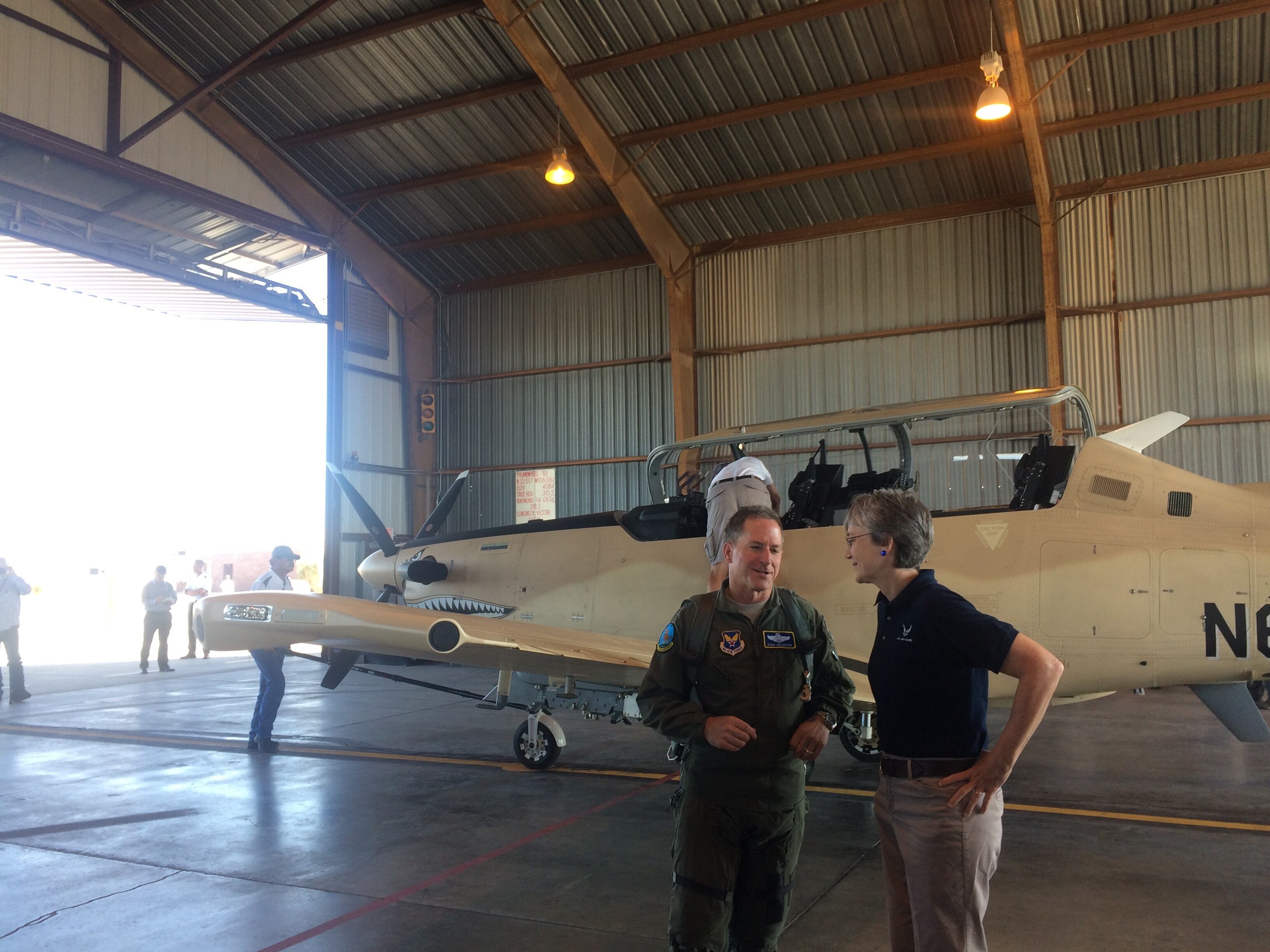WASHINGTON — The U.S. Air Force’s light attack experiment is officially over as of Aug. 30, but it will be months before the service makes a decision on whether to hold a combat demonstration, its top civilian said Thursday.
Speaking to Defense News and its sister publication Air Force Times in an exclusive interview, U.S. Air Force Secretary Heather Wilson said the service had concluded test flights at Holloman Air Force Base, New Mexico, and plans to complete reports on the cost and performance of each aircraft by the end of this year.
The light attack demo, which started late July, included the A-29 Super Tucano offered by Sierra Nevada Corp. and Embraer, the AT-802L Longsword from L3 Technologies and Air Tractor and the Scorpion jet and AT-6 Wolverine turboprop, both made by Textron.
“I would expect this fall, or certainly by December or January, that we would make a decision on whether to do a follow-on experiment — it would be a combat experiment — and which aircraft might participate in that,” Wilson said.
“We would probably bring it to the theater. I’m not sure exactly what missions they would run, but one of the things we can do is see how it connects up with command-and-control systems, those kinds of things,” she continued. The U.S. military conducted a similar experiment, called Combat Dragon II, in 2013 where it operated a pair of upgraded OV-10 Broncos in the Middle East.
RELATED

The U.S. Air Force is interested in beefing up its combat aviation fleet with inexpensive light attack aircraft that can inexpensively and effectively supplement more advanced fighter jets conducting close air support and other low-end missions in the Middle East. Although no program of record exists yet, Wilson has said the August experiment at Holloman Air Force Base will help the service determine whether to press on with additional demos or an eventual purchase of aircraft.
Although the U.S. Air Force still hasn’t chosen exactly where a combat demonstration would be held, Wilson noted that the Afghan Air Force has flown combat sorties with its Super Tucanos over the past 18 months — so far, without any losses.
That may point to the efficacy of light attack aircraft in theaters like Afghanistan, where insurgent groups have little surface-to-air capability.
Wilson also said her August trip to Iraq and Afghanistan also opened her eyes to the strain on the tanker force, prompting some interest in a light attack aircraft that could also act as a refueler.
“We were doing about 65 tanker sorties a day. Fighter aircraft that are taking the fight to ISIS, it probably refuels four or five times on each mission. So it is very tanker dependent,” she said. “And some of the light aircraft that we’ve seen do have refueling capabilities. Some don’t, so I think that will be one of the factors to consider.”
Although none of the entrants in the light attack aircraft experiment can currently act as a tanker, two of them could conduct some refueling operations if modified, company officials told Defense News.
The Canadian version of the AT-802 — a commercial crop duster, not the weaponized Longsword version — has a supplemental type certificate allowing it to carry fuel in an external tank, said Tom Menker, Air Tractor’s head of government relations and business development.
Air Tractor also has begun work that would allow an AT-802U — a militarized version of the platform that is a predecessor to the Longsword — use its hard points to carry refueling pods capable of filling unmanned aerial vehicles, he said.
Textron spokeswoman Sylvia Pierson also noted that its Scorpion jet has the payload and ground clearance necessary to use it for tanking missions. However, “we have not yet received any customer requirements to integrate and demonstrate this capability,” she said.
Valerie Insinna is Defense News' air warfare reporter. She previously worked the Navy/congressional beats for Defense Daily, which followed almost three years as a staff writer for National Defense Magazine. Prior to that, she worked as an editorial assistant for the Tokyo Shimbun’s Washington bureau.








